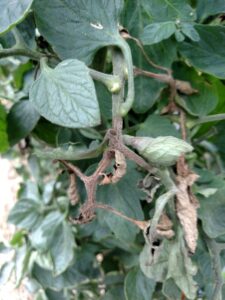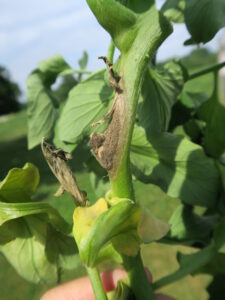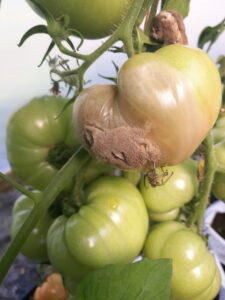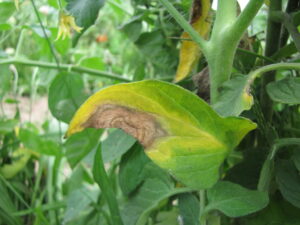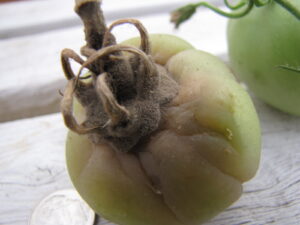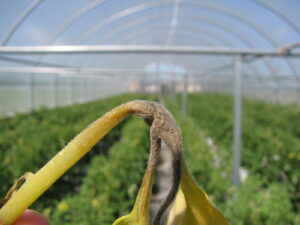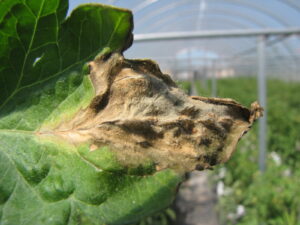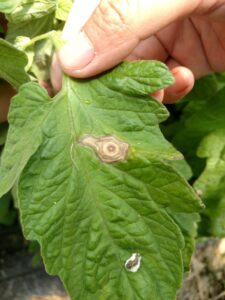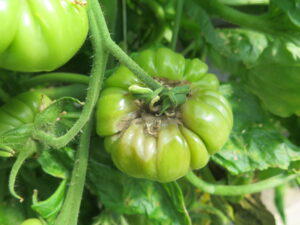Gray mold
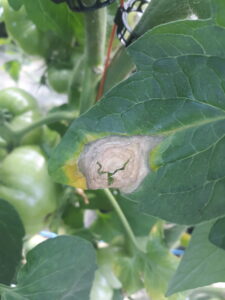
Figure 3. Gray mold lesions on leaves are oftne light brown or gray, often on the edge of the leaf and may show a ring-structure. Note sporulation of fungus observed in the crack of the lesion.
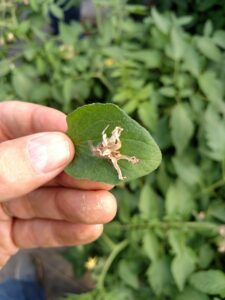
Figure 9. Tomato flower blossom with gray mold sporulation appears to have fallen on leaf where a new lesion has started.
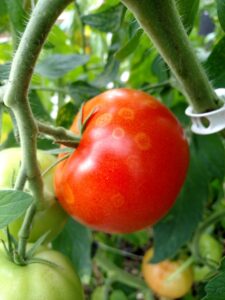
Figure 10. Conidia of the gray mold fungus fall onto tomato fruit where they may induce the reaction shown here resulting in a ‘ghost lesion’. While the lesions will not expand, the appearance may reduce marketability.
